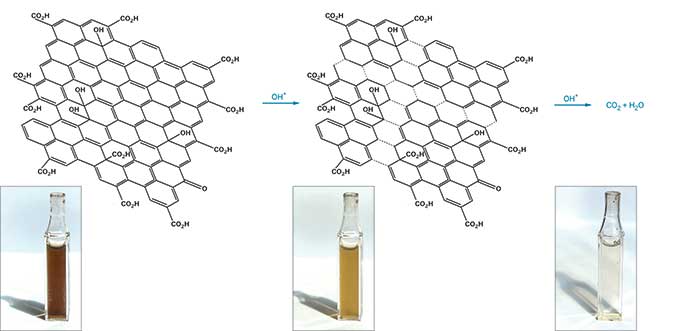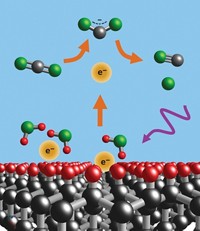Advertisement
Grab your lab coat. Let's get started
Welcome!
Welcome!
Create an account below to get 6 C&EN articles per month, receive newsletters and more - all free.
It seems this is your first time logging in online. Please enter the following information to continue.
As an ACS member you automatically get access to this site. All we need is few more details to create your reading experience.
Not you? Sign in with a different account.
Not you? Sign in with a different account.
ERROR 1
ERROR 1
ERROR 2
ERROR 2
ERROR 2
ERROR 2
ERROR 2
Password and Confirm password must match.
If you have an ACS member number, please enter it here so we can link this account to your membership. (optional)
ERROR 2
ACS values your privacy. By submitting your information, you are gaining access to C&EN and subscribing to our weekly newsletter. We use the information you provide to make your reading experience better, and we will never sell your data to third party members.
2-D Materials
Graphene Surprises By Decomposing
Materials Chemistry: Ultrathin carbon touted for inertness disintegrates oxidatively
by Mitch Jacoby
July 31, 2014
| A version of this story appeared in
Volume 92, Issue 31

Graphene’s hallmark chemical stability has made this ultrathin carbon network an ideal support material in catalysis and energy studies. But that inertness is now being called into question by an investigation showing that the material can decompose when used in common applications (Chem. Mater. 2014, DOI: 10.1021/cm5026552).
Water-dispersible forms of graphene are easy to make and easy to handle via simple wet-chemistry methods. Large numbers of researchers use the materials to support nanoparticle catalysts for use in environmental remediation, solar cells, and fuel cells.
For such applications, scientists often use a solution-phase form of graphene called reduced graphene oxide. RGO is made by chemically reducing graphene oxide, a common starting material. RGO’s conductivity and bonding characteristics are credited with the high level of catalytic activity it promotes.
But this highly touted material may not stand up to repeated use. University of Notre Dame scientists have shown that aqueous suspensions of RGO-supported TiO2 nanoparticles unexpectedly undergo decomposition. Specifically, James G. Radich, Prashant V. Kamat, and colleagues demonstrate that upon exposure to ultraviolet light, the nanoparticle surfaces generate hydroxyl radicals, which oxidatively attack RGO.
On the basis of spectroscopy and microscopy analyses and total-organic-carbon measurements, the group explains that UV radiation triggers a fragmentation process that breaks the RGO sheets into polyaromatic hydrocarbon (PAH)-like compounds. Prolonged irradiation eventually decomposes the organic compounds completely, leaving behind CO2 and water.
The Notre Dame study was carried out in a photocatalysis setting but might apply to other graphene applications, the team notes. For example, oxygen reduction reactions on fuel-cell cathodes can also generate hydroxyl radicals and initiate RGO decomposition. And in cases in which TiO2-RGO composites are used to destroy waterborne organic pollutants photocatalytically, the possibility that oxidation of RGO sheets will generate toxic PAHs may outweigh RGO’s potential environmental benefits.
Characterizing the study as “incredibly important,” the University of Alberta’s Jillian M. Buriak, a specialist in nanoscience and materials chemistry, says this study clearly shows that using graphene as a platform for photocatalysis requires careful evaluation. But she adds that the very same reactivity that causes unwanted degradation of RGO may lead to new approaches in environmental remediation of related carbon contaminants, including carbon nanotubes, fullerenes, and other nanostructured forms of carbon.




Join the conversation
Contact the reporter
Submit a Letter to the Editor for publication
Engage with us on Twitter